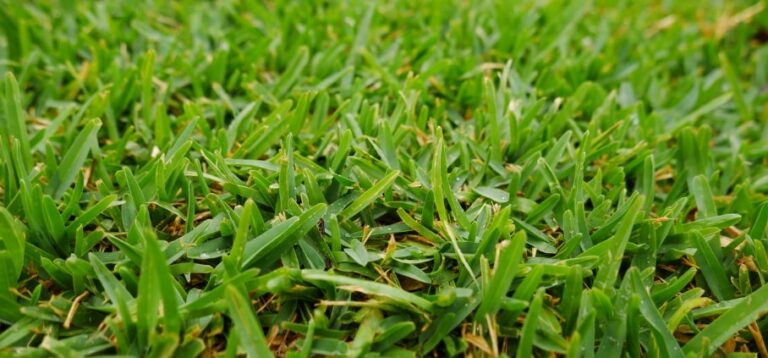Why Buffalo Grass Is the Secret to a Perfect Aussie Lawn?
Buffalo Grass is one of the most loved lawn grasses in Australia. It is soft underfoot, strong enough to handle lots of activity, and can thrive in many different climates. Whether you are a busy homeowner, a family with kids and pets, or someone who wants a lawn that looks great without needing too much work, Buffalo Grass could be the perfect choice.
This grass has been a favorite for many years because of its ability to stay green even during hot Australian summers. Plus, it’s not just beautiful it’s also tough and long-lasting.
In this article, I will take you through everything you need to know about Buffalo Grass, from the different types to tips on how to care for it. By the end, you’ll have all the knowledge you need to make your lawn the envy of the neighborhood.
Types of Buffalo Grass
There are several types of Buffalo Grass, and each has its unique features. Here are some popular ones you might like to know about:
1. Sir Walter Buffalo
Sir Walter is Australia’s most popular Buffalo Grass. It’s known for its softness, deep green color, and ability to grow well in both sunny and shady spots. It’s also resistant to pests and diseases, making it an easy choice for many homeowners.
2. Sapphire Buffalo
Sapphire Buffalo has finer, softer leaves compared to other types. It grows well in shade and keeps its rich green color all year round. This makes it perfect for gardens with trees or buildings that block the sun.
3. Palmetto Buffalo
Palmetto Buffalo is another soft variety. It requires less mowing and watering than other grasses, making it a great option if you want a low-maintenance lawn.
4. Soft-Leaf Buffalo
This is a group of Buffalo Grass types with leaves that are smooth and comfortable to walk on. They are perfect for families with kids or pets who enjoy spending time outside.
Comparison of Types
Here’s a quick look at how these types compare:
| Type | Shade Tolerance | Softness | Maintenance |
|---|---|---|---|
| Sir Walter | High | Very Soft | Medium |
| Sapphire | High | Extremely Soft | Medium |
| Palmetto | Medium | Soft | Low |
| Soft-Leaf (General) | Medium-High | Very Soft | Medium |
Each type has something special to offer. Depending on your needs, you can choose the one that suits your lawn best. In the next sections, we’ll dive into how to care for Buffalo Grass and make it thrive in your backyard.
5 Benefits of Choosing Buffalo Grass
Buffalo Grass is a great choice for Australian lawns because it has many amazing benefits. Here are some of the best reasons to choose Buffalo Grass for your home:
1. Stays Green in Tough Weather
Buffalo Grass is known for staying green even during hot summers or dry weather. It doesn’t need as much water as other grass types, making it perfect for Australia’s changing weather.
2. Grows Well in Shade
If your yard has lots of trees or shaded areas, Buffalo Grass is a great option. Many types, like Sir Walter and Sapphire, grow well in places with less sunlight.
3. Feels Soft and Looks Beautiful
Buffalo Grass has soft, smooth leaves that feel good under your feet. It also has a rich green color that makes your lawn look fresh and healthy all year round.
4. Tough and Hard-Wearing
This grass is strong enough to handle heavy foot traffic. Whether kids are playing or pets are running around, Buffalo Grass bounces back easily.
5. Easy to Care For
Buffalo Grass doesn’t need much work to look great. It grows slowly, so you don’t need to mow it as often. Plus, it resists pests and diseases better than many other grasses.
Challenges of Buffalo Grass
While Buffalo Grass is amazing, it does come with a few challenges. Knowing about these can help you avoid problems and keep your lawn healthy.
1. Needs the Right Fertilizer
Buffalo Grass needs good-quality fertilizer to stay healthy and green. Without proper feeding, it might lose its color and look dull.
2. Can Grow Thatch
Over time, Buffalo Grass can build up a layer of thatch (dead grass and roots) on the soil. This can stop water and nutrients from reaching the grass. You may need to dethatch your lawn once in a while.
3. Initial Cost is Higher
The upfront cost of Buffalo Grass turf can be more expensive than other types. But it’s worth it in the long run because it lasts longer and needs less maintenance.
4. Might Get Weeds
If not cared for properly, weeds can grow in Buffalo Grass. Regular mowing and weed control can help keep your lawn looking its best.
Climate Suitability
Buffalo Grass is perfect for Australia because it grows well in many different climates.
1. Hot and Dry Areas
Buffalo Grass is tough and can survive in hot, dry places. It doesn’t need as much water as other grasses, which makes it a great choice for regions with little rainfall.
2. Shady Areas
If your yard has lots of trees or buildings that block sunlight, Buffalo Grass can still grow. Types like Sapphire and Sir Walter are known for doing well in shaded spots.
3. Coastal Areas
Buffalo Grass also grows well in coastal regions. It can handle salty air and sandy soil better than many other grass types.
By choosing Buffalo Grass, you can enjoy a lawn that looks great no matter where you live in Australia.
Planting Buffalo Grass
Planting Buffalo Grass is easy if you follow the right steps. Whether you use turf, seeds, or plugs, you can get a beautiful lawn with some simple preparation.
1. Prepare the Soil
Start by cleaning your yard. Remove any weeds, rocks, or old grass. Then, loosen the soil with a rake or shovel. Add some good-quality soil or compost to make it rich and healthy for the grass.
2. Choose the Right Time
The best time to plant Buffalo Grass is in spring or early summer. This gives the grass enough time to grow strong roots before the cooler months.
3. Lay the Turf or Seeds
- For Turf: Place the pieces of Buffalo Grass turf tightly together. Make sure there are no gaps.
- For Seeds or Plugs: Spread the seeds evenly or plant the plugs in small holes about 30 cm apart.
4. Water Well
After planting, water the lawn deeply. Keep the soil moist for the first few weeks to help the grass take root.
5. Care During the First Weeks
Avoid walking on the lawn while it’s growing. Once the grass is firmly rooted, you can start mowing and enjoying your new lawn.
Care and Maintenance
Buffalo Grass is easy to care for, but a little effort can make it look even better. Here are some simple tips to keep your lawn healthy and green.
1. Mowing
Buffalo Grass grows slowly, so you don’t need to mow it often. Keep the grass at about 4-5 cm tall. During summer, let it grow a bit longer to protect the roots from heat.
2. Watering
Buffalo Grass doesn’t need too much water. Water it deeply once a week, or more often if the weather is very hot. Early morning is the best time to water.
3. Feeding
Feed your lawn with a good-quality fertilizer every 2-3 months. This will keep the grass green and healthy. Look for fertilizers made for Buffalo Grass.
4. Weed Control
Keep an eye out for weeds. Remove them by hand or use a weed killer that’s safe for Buffalo Grass. Regular mowing will also help prevent weeds.
5. Aeration
Aerate the soil once a year by poking small holes in the ground. This helps air, water, and nutrients reach the roots.
By following these simple steps, your Buffalo Grass will stay beautiful and healthy all year round.
Buffalo Grass vs. Other Grass Types
When choosing the best grass for your lawn, it’s important to know how Buffalo Grass compares to other popular grass types. Here’s an easy comparison to help you decide.
1. Buffalo Grass vs. Couch Grass
- Shade Tolerance: Buffalo Grass grows well in shade, while Couch Grass needs full sun. If you have trees or buildings that block sunlight, Buffalo Grass is a better choice.
- Softness: Buffalo Grass is softer underfoot. Couch Grass has a rougher texture.
- Maintenance: Couch Grass grows faster and needs more mowing. Buffalo Grass grows slower, so it’s easier to care for.
- Durability: Both grasses are tough, but Buffalo Grass handles wear and tear better.
2. Buffalo Grass vs. Kikuyu Grass
- Water Needs: Kikuyu Grass needs more water to stay green, while Buffalo Grass is better for dry areas.
- Growth Rate: Kikuyu Grass spreads quickly and can take over your garden if not managed. Buffalo Grass grows at a steady pace.
- Shade Tolerance: Buffalo Grass does well in shady areas, but Kikuyu Grass struggles without full sun.
3. Buffalo Grass vs. Zoysia Grass
- Softness: Both grasses are soft, but Buffalo Grass has wider, smoother leaves.
- Maintenance: Zoysia Grass grows very slowly, so it needs even less mowing than Buffalo Grass. However, it takes longer to establish.
- Climate: Both grasses are drought-resistant, but Buffalo Grass performs better in colder weather.
By knowing these differences, you can choose the grass that fits your yard and lifestyle best. Buffalo Grass stands out because it offers the perfect balance of softness, durability, and low maintenance.
Dealing with Common Issues
Even though Buffalo Grass is tough, it can face a few common problems. Don’t worry—most issues are easy to fix. Here’s how to deal with them:
1. Pests
Buffalo Grass can sometimes attract pests like lawn grubs or armyworms. If you see patches of dead grass, check for pests. Use a safe pest control product to get rid of them.
2. Diseases
Fungal diseases can cause brown or yellow spots on your lawn. To prevent this, avoid overwatering and mow at the right height. If your lawn gets a disease, use a fungicide made for Buffalo Grass.
3. Thatch Build-Up
Over time, dead grass can build up on the soil, making it harder for water and nutrients to reach the roots. You can remove thatch by using a dethatching rake or a lawn scarifier.
4. Patchy Growth
If some areas of your lawn look bare, it might be due to poor soil, pests, or lack of sunlight. Fix this by improving the soil with compost and reseeding the patchy areas.
5. Weeds
Weeds can sometimes grow in Buffalo Grass, especially if the lawn is weak. Pull weeds out by hand or use a weed killer that is safe for Buffalo Grass. Regular mowing and feeding will also help keep weeds away.
Eco-Friendly Lawn Care for Buffalo Grass
Caring for Buffalo Grass in an eco-friendly way is good for the environment and your wallet. Here are some simple tips to keep your lawn green while protecting nature.
1. Use Organic Fertilizers
Choose organic fertilizers instead of chemical ones. Organic fertilizers are safe for pets, kids, and the environment. They improve soil health while keeping your lawn green.
2. Water Wisely
Buffalo Grass doesn’t need much water. Water early in the morning to avoid evaporation. Use rainwater if you can, and let your lawn dry out a little between waterings. This will encourage the roots to grow deeper and make the grass stronger.
3. Avoid Harsh Chemicals
Instead of using strong weed killers and pesticides, try natural options. Hand-pull weeds or use homemade weed sprays made with vinegar and water. For pests, use natural remedies like neem oil or soap sprays.
4. Compost Your Clippings
When you mow your lawn, leave the clippings on the grass or use them for compost. Clippings act as a natural fertilizer and return nutrients to the soil.
5. Plant Native Plants Around Your Lawn
Add native plants or flowers around your Buffalo Grass lawn. They support local wildlife, attract pollinators, and require little water.
Seasonal Care Tips for Buffalo Grass
Buffalo Grass needs slightly different care during each season. Here’s how you can keep your lawn looking its best all year.
1. Spring
- What to Do: Fertilize your lawn to boost its growth after winter. Aerate the soil to improve air and water flow.
- Mowing Tips: Start mowing regularly but don’t cut too short—keep it around 5 cm.
2. Summer
- What to Do: Water deeply once a week to help the grass survive the heat. Apply pest control if needed.
- Mowing Tips: Let the grass grow a bit taller to protect the roots from the sun.
3. Autumn
- What to Do: Fertilize your lawn again to prepare it for winter. Remove fallen leaves to prevent diseases.
- Mowing Tips: Reduce mowing frequency as the grass growth slows down.
4. Winter
- What to Do: Buffalo Grass needs very little care in winter. Avoid overwatering and let it rest.
- Mowing Tips: Mow only when needed, keeping the grass slightly longer.
By following these tips, your Buffalo Grass will thrive through every season.
Buffalo Grass FAQ
Here are some common questions people ask about Buffalo Grass:
1. Does Buffalo Grass Need a Lot of Water?
No, Buffalo Grass is drought-resistant and needs less water than many other grass types. Water once a week during hot weather and less in cooler months.
2. Can Buffalo Grass Grow in Shade?
Yes, Buffalo Grass grows well in shady areas, especially varieties like Sir Walter and Sapphire.
3. How Long Does Buffalo Grass Take to Grow?
Buffalo Grass grows quickly if planted as turf, but it can take several months to establish if planted from seed.
4. Is Buffalo Grass Good for Homes with Kids and Pets?
Yes! Buffalo Grass is soft, safe, and durable, making it perfect for families with kids and pets.
5. How Do I Keep My Buffalo Grass Green?
Feed it with fertilizer every 2-3 months, water it properly, and mow at the right height. These steps will keep your lawn green and healthy.
Conclusion
Buffalo Grass is a fantastic choice for Australian lawns. It’s soft, strong, and easy to maintain. Whether you’re looking for a lawn that stays green in the heat, thrives in shade, or requires little care, Buffalo Grass ticks all the boxes.
By following the tips in this guide, you can grow and care for a beautiful Buffalo Grass lawn that will be the envy of your neighborhood. No matter where you live in Australia, Buffalo Grass can help you create a lush, inviting outdoor space for your family and friends to enjoy.



